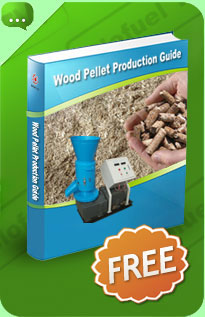Pelletizing Machinery
This invention relates generally to pelletizing machinery and more particularly to a pellet machine which is tolerant of variability in properties of the feed product and which subjects the feed product to intensive mechanical shearing action prior to pellet formation in the extrusion die.
The standard pelleting process in animal feed pellet production and other similar applications achieves a combination of heating and moisturizing the feed product, performing mechanical work on the feed product, and densification and shaping of the feed product to produce pellets. Heating and moisturizing the feed product is required for sterilization (usually to destroy salmonella organisms), for causing a desired degree of starch conversion, and for softening the feed product to a sufficient degree for forming durable pellets without danger of plugging the pellet die. It is generally accomplished by injecting steam into the feed product within a conditioning chamber and holding the mixture until the heat and moisture from the condensing steam is absorbed into the feed product. The feed product is usually ground before it is exposed to the heat and moisture in the conditioning chamber.
In a pellet mill of standard configuration, mechanical work is performed on the feed product by the pinching action of a roller passing over a die face. Some shear of the product also results from the rolling action; but, because of the fluid characteristic of the feed product and frictional drag in the die holes, even more shear occurs in the die holes between the centers and the outer surfaces of the pellets.
Densification occurs as a result of the pressure required to force the feed product through the die holes. The only force available to achieve this extrusion is that developed by the material being pinched between the roller and the die face, and it is limited by the fluid flow characteristics of the feed product. If the force required to push the feed product through the die holes exceeds the pressure that can be generated in the feed product by the pinching action, flow through the die holes halts and the pelleting operation ceases. This force limitation imposes upper limits on moisture content and fat content of the formulation of the feed product.
In some applications, the process is improved if higher temperatures together with greater levels of mechanical shear and pressure are applied to the feed product. Several non-standard pelleting concepts have been developed to attain these higher levels of temperature, mechanical shear, and pressure.
Pretreatment of the Feed Product in an Expander before pelleting can achieve high intensity shearing as part of the conditioning process or as an extension of that process. In this operation, an expander is a screw conveyor operating ahead of a standard pellet mill and consisting of paddles rotating between interrupter bars. The paddles force the feed product past the interrupter bars against a back pressure created by a restrictor plate or discharge cone at the end of the screw assembly, thereby subjecting the product to shear forces. As an option, steam and water can be injected into the housing, if needed. The expander can achieve high intensity shear and elevated pressures which produce a higher temperature than be achieved at atmospheric pressure. However, treatment in an expander has its limitations, viz. inefficiency, difficult product to pelletize, and sensitivity to the properties of the feed product. There are a series of large void volumes in the expander separated by the paddles and interrupter bars. The intense shearing only takes place at the interface between the paddles, bars, and feed product. In the void volumes the product is only mulled by low level compressive forces which consumes energy, increases temperature of feed product, and produces little shear. If needed, the temperature rise produced by the wasted work in the expander could be produced more efficiently by additional steam injection. Treated product is discharged from the expander in the form of chunks which create erratic die loading in the subsequent pelleting process. Also, operating characteristics of the expander are sensitive to the properties of the feed product. For example, if the feed product becomes too dry, extreme pressures leading to component failure or stall may develop in the expander. On the other hand, feed products containing excessive moisture easily become fluidized and create no back pressure. Thus, except in those rare cases where the feed product is very uniform, the expander is not reliably practical.
The foregoing illustrates limitations known to exist in present high shear pelleting machines. It would be advantageous to provide an alternative directed to overcoming one or more of those limitations. Accordingly, a suitable alternative is provided including features more fully disclosed hereinafter.

